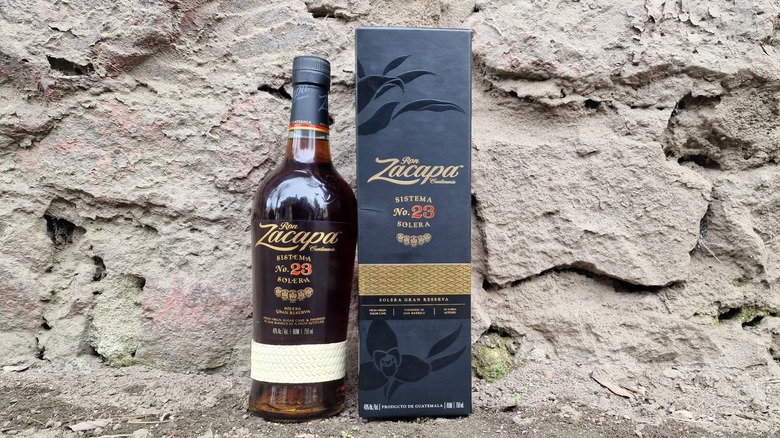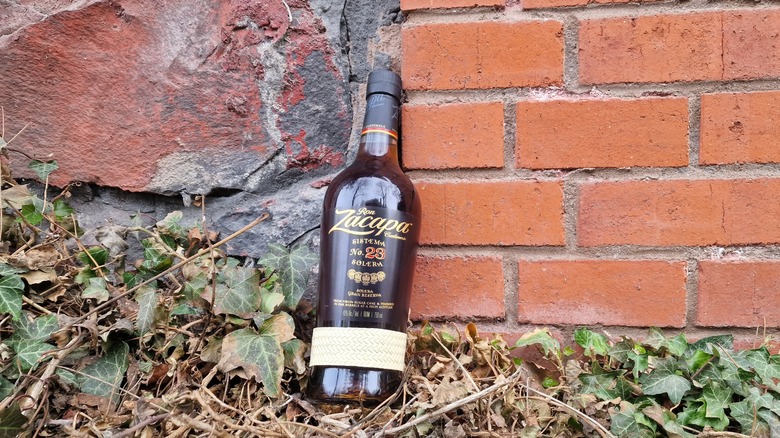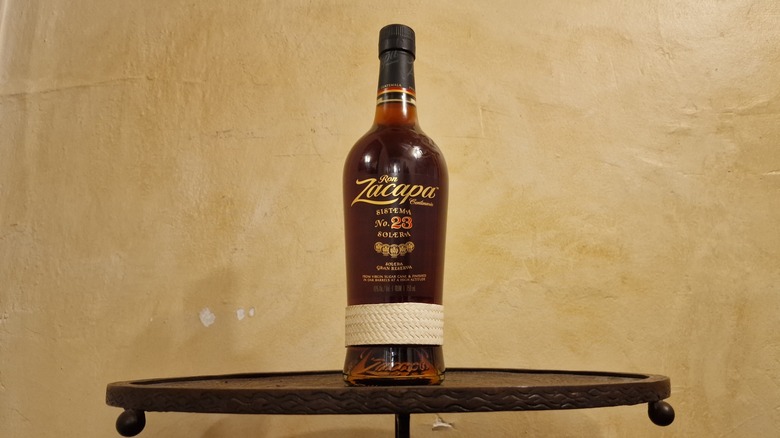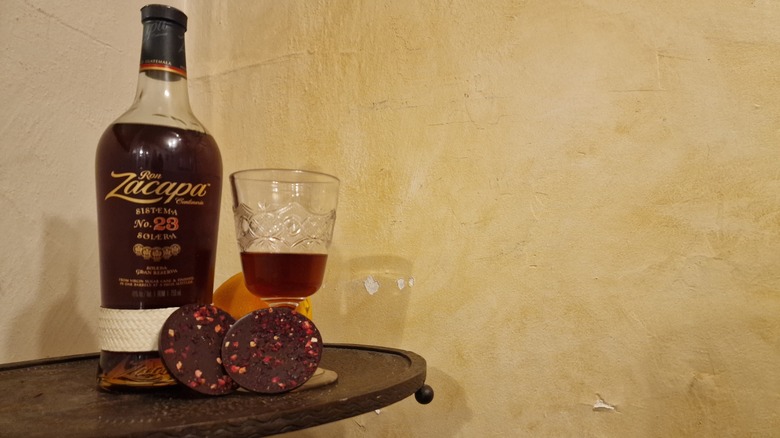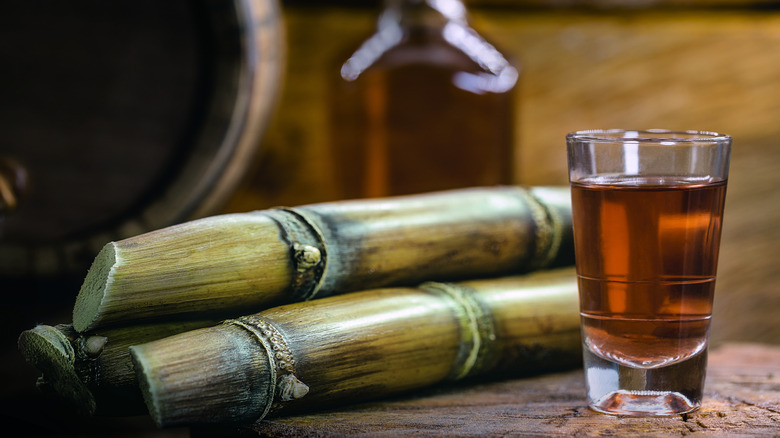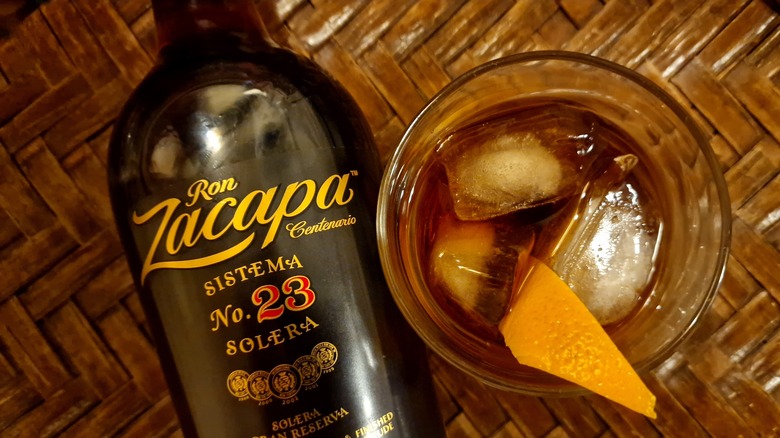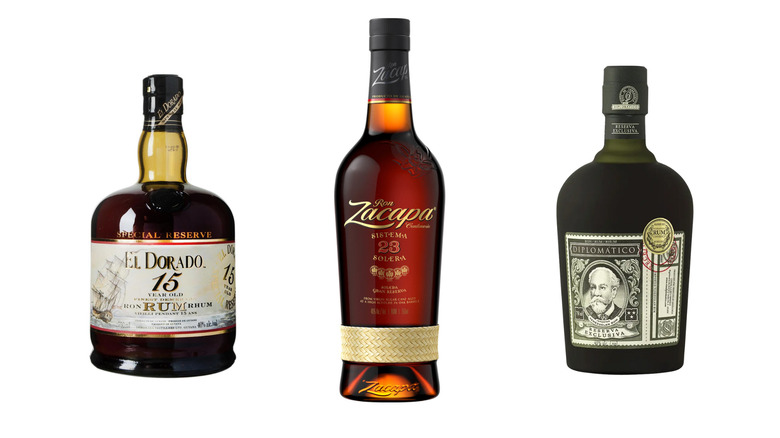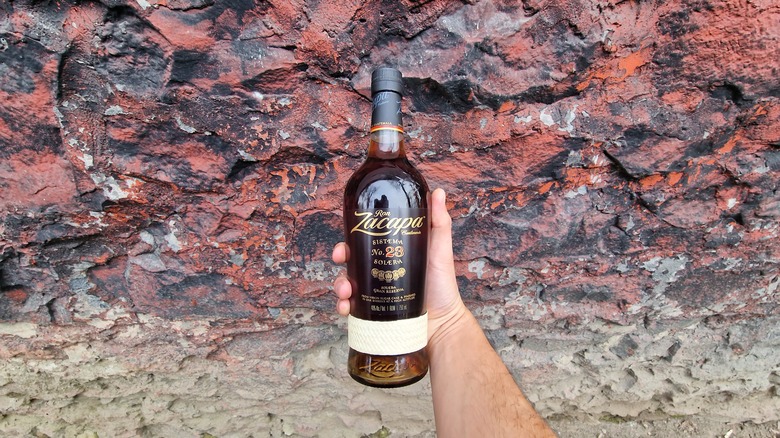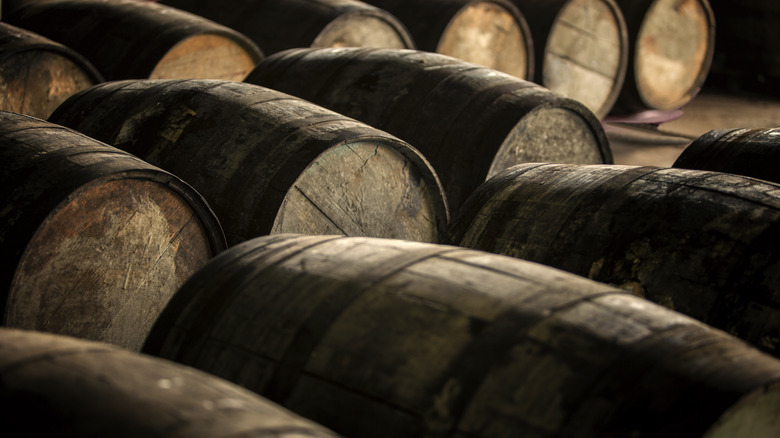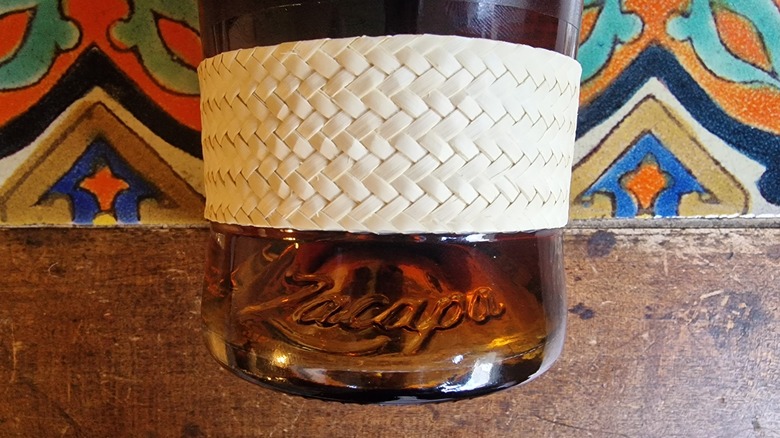Ron Zacapa No. 23 Centenario: The Ultimate Bottle Guide
Ron Zacapa Centenario Sistema Solera No.23 — abbreviated to Zacapa 23 in this article for brevity — is a premium, aged rum from Guatemala. It has a rich and complex flavor profile that comes from being distilled from freshly pressed sugarcane juice rather than molasses like most other rums, and it undergoes a unique aging process.
At 40% ABV, Zacapa 23's strength aligns with most other rums in its class, providing an excellent balance between flavor and potency. This means it can easily be enjoyed neat, on the rocks, or used for cocktails. The rum is of a sweet style, and exhibits bold notes of caramel, vanilla, and cacao, with notes of spice and oak. Many of its characteristics can be attributed to the barrels used to age the rum, which include ex-bourbon, sherry, and Pedro Ximenez wine casks.
Ron Zacapa has garnered plenty of well-deserved acclaim over the years, having picked up numerous awards for its sophisticated range and earning a place among Latin America's best rum brands. It's also a brand with deep roots in Guatemala's rum world, deftly blending cultural tradition, superior local ingredients, and state-of-the-art rum production methods. Proponents of Zacapa have a strong appreciation for the consistency of the rum's quality and the high level of skill and craftsmanship that goes into making it. Now, it's time to take an in-depth look at Zacapa 23 and the fascinating story behind its production.
The history of Ron Zacapa
To understand the story of Ron Zacapa — ron being the Spanish word for rum, not a person — it's worth reflecting on the rich history of Guatemalan rum. Although the country didn't gain a reputation for rum-making until the 20th century, the seeds were sown centuries ago.
Regardless of the final production method, making rum requires sugarcane, a plant that originated in the South Pacific. It wasn't until the 16th century that sugarcane cultivation arrived in Guatemala alongside Spanish colonization. The indigenous Maya people of the region were already familiar with fermenting the likes of honey and maize, and as the sugarcane industry grew locals began to experiment with the new crop to make alcoholic beverages.
However, although sugarcane liquors became extremely popular in Guatemala, it wasn't until the 1940s that Spanish immigrants brought knowledge of modern distilling techniques to the country. With the introduction of new production methods and a law requiring rum to be aged for at least a year before it could be sold, the quality and sustainability of Guatemalan rum grew. In the years that followed, the increased demand for sugar revolutionized the sugar industry and the rum industry followed alongside it. Factories were modernized with new equipment, and in 1975, universities began training specialist sugarcane technicians. In 1976, just one year later, Ron Zacapa was born.
The story behind Zacapa Centenario 23
Of all the Spanish families who made an impact on the Guatemalan industry in the early 20th century, the Botran's were arguably the most significant. The five Botran brothers — Venancio, Felipe, Jesús, Alejandro, and Andrés — formed Industria Licorera de Guatemala in 1940, a company that remains one of the country's most prominent rum producers.
Zacapa — meaning "on the river of grass" in the indigenous Nahuatl language — is a city in the east of Guatemala, with a strong reputation for its fine sugarcane, tobacco, and corn. After the success of their Botran rum brand, the brothers decided to create a new expression to honor the 100th anniversary of the city; they turned to a man named Alejandro Burgaleta to help with their task. A doctor and a chemist, Burgaleta crafted the first-ever batch of Zacapa Centenario, and in doing so, put Guatemalan rum on the map for good.
While today's expression has almost certainly evolved from the original version, it still bears the name Centenario — meaning centenary in Spanish — as an homage to the first product. As you may expect, the number 23 refers to the age of the rum; however, there is a slight caveat. Like most aged spirits, Zacapa is a blend of rums of varying ages, so while the oldest distillate has been aged for 23 years, there are rums as young as six years old in the final mix.
What does Ron Zacapa Centenario 23 taste like?
When first approaching the dark copper Ron Zacapa Centenario 23, you'll notice some alcohol heat to the nose — likely due to the younger rums in the blend — but this soon passes and gives way to the expected sweeter characteristics. There's plenty of brown sugar, vanilla, and caramel up front, but repeated nosings reveal hints of cacao and dried tropical fruits, like mango, pineapple, and banana.
Zacapa 23's sweetness is in full force upon first tasting, and its pleasantly viscous mouthfeel is somewhat syrupy. Shortly, the full-bodied butterscotch and dried fruit notes build into a more savory profile, likely thanks to Zacapa's unique aging process and the variety of casks they use. Leather, oak, and tobacco shine through, along with spicy hints of cinnamon and nutmeg, to the point where you'd be forgiven for making comparisons to bourbon.
The finish is long and complex, tying together everything that's come before, but it's here that the rum's sugarcane juice base makes itself known. While not as vegetal as cachaça, a delightfully earthy funk can be detected. Although it goes some way towards evening out the rum's sweeter elements, the balance remains tipped toward the more saccharine flavors. For your tasting, it might be worthwhile to add a splash of water to the neat rum to reduce the heat of the alcohol and make it easier to detect the rum's more delicate aspects.
How is Ron Zacapa Centenario 23 made?
Most rums are made by distilling molasses, a thick syrup that's the byproduct of the sugar-refining process. However, when Europeans realized they could produce sugar with homegrown beets in the 19th century, the sugar markets in the Americas crashed.
Soon, rum became more valuable than sugar, so rather than going through the refining process to make molasses, rum-makers took a shortcut. Instead, they began making rum by distilling fresh sugarcane juice, a liquor alternatively referred to as rhum. This method became a tradition in Guatemala, so when rum-producing regulations were eventually introduced, it became law that Guatemalan rum had to be distilled from "virgin sugarcane honey." Essentially, this is a concentrate made by taking the first-press juice from Guatemalan sugarcane — notably rich and sweet due to the region's mineral-rich soil — and boiling off the water until it becomes syrup.
Zacapa ferments their "honey" with a yeast strain drawn from pineapples that allows more time for aromatics to develop before distilling it and shipping it to their aging house. Here, the rum is aged using the "solera system," a process first used by Spanish sherry-makers in the 18th century to fractionally blend wines of different ages. In the case of Centenario 23, the casks used for aging are a combination of barrels that once housed sherry, American whiskey, and Pedro Ximenez wines, all of which play a part in imbuing the rum with delicious and unique flavors.
How To Drink Ron Zacapa Centenario 23
When trying a rum for the first time, it's always worth sipping it neat to experience the spirit in its purest form. Zacapa 23 is extremely approachable as rums go, but if you find the alcohol content too strong, a splash of water or a couple of ice cubes are the best ways to make the most of the complex flavor profile.
Zacapa 23's versatility lends itself very well to mixing, although its premium quality means you may want to save it for drinks where the rum remains the star. It works well with Coke but adding a few lime wedges helps cut through the high sweetness of this combo. Aged rums like Zacapa 23 are always worth testing out in an old fashioned, but you should try out different combinations of bitters to make the most of the rum's taste profile. Orange bitters are an excellent way of highlighting Zacapa 23's fruit notes, and a few dashes of cocoa bitters will complement the rum's richer characteristics while tempering some of the cocktail's sweetness. An orange peel garnish over the top of the drink will also make the initial aroma much more inviting.
As far as pairing Zacapa 23 with food, dark chocolate balances out the rum's sugary components while aligning with its taste profile, and aged dark rums also go great with barbequed meats, such as fatty ribs, as they help cut through the fat.
Ron Zacapa Centenario 23 vs El Dorado 15 Year vs Diplomático Exclusiva Reserva
To better assess the position of Zacapa 23 in the rum world, it's helpful to compare it with some of the competition. Two of the closest rums in terms of taste and style would most likely be El Dorado 15 Year and Diplomático Exclusiva Reserva, so let's see how they match up.
For a bit of background, El Dorado 15 Year is a superb dark rum from Guyana made with molasses. El Dorado follows different aging regulations than Zacapa, so the youngest rum in the bottle is 15 years old, making it older on average than Zacapa 23. Diplomático Exclusiva Reserva is a Venezuelan rum that uses a combination of molasses and sugarcane honey, with the youngest rum in the blend being 12 years old.
Ultimately, these rums' flavor profiles are similar, showcasing caramel, vanilla, dried fruit, and oak. However, the Diplomático is the sweetest of the three and has a richer, more dessert-like quality, ideal for an after-dinner treat. Conversely, the El Dorado is less sweet than the Zacapa, so it's better if you prefer a drier rum; although, it has a slightly thinner and less velvety mouthfeel. Price-wise, the El Dorado and Zacapa are almost identical, but the Diplomático is a fair amount cheaper, possibly making it the best value of the three if you don't mind a more sugary sipping rum.
Is Ron Zacapa Centenario 23 a good value?
Ron Zacapa 23 has a retail price of around $50 to $60, which is relatively steep for a distillery's entry-level rum. That said, Zacapa does have a solid reputation as a premium rum brand, so it's not unreasonable to assume that the price tag is worth it.
When considering if Zacapa 23 is a good value the question should be answered from two perspectives — is the price worth the drinking experience and is the price worth it compared to other rums? The answer to the first question is yes, as long as sweeter rums are your preferred style. The approachability, taste, versatility, and quality of ingredients make Zacapa 23 worth $50, there are certainly more expensive spirits out there that don't taste nearly as good.
That said, if Zacapa 23 doesn't blow you away other rums of similar quality come in a bit cheaper, like Diplomático Exclusiva Reserva. Zacapa 23 is also relatively expensive compared to rums that are, on average, aged for longer, although there's something to be said for the effectiveness of the solera aging in this regard. You'd be forgiven for assuming it was a much older rum based on taste alone. Cheaper alternatives may also be more appealing if you plan on using Zacapa in complex cocktails, where its nuanced flavors are less likely to shine through.
Ron Zacapa's master blender has been crafting rum for over 35 years
Master blenders have one of the most important roles in rum-making, as they're tasked with choosing precisely which rums are combined in a final product. It's a role that requires an exceptional nose and palate for rum and plenty of experience, all of which Lorena Vásquez has in abundance.
Vásquez, originally from Nicaragua, is Zacapa's Master Blender and Director of Innovation and has been blending Zacapa rum for almost 40 years. When that experience is combined with a degree in chemistry and pharmacy, few people are more qualified to lead the crafting of Zacapa rum. Vásquez is also one of the few women to hold such an esteemed role in what's typically a male-led industry; however, history tells us that women have traditionally held prominent roles in the production of spirits in Guatemala.
Before the Spanish began to colonize Mesoamerica, women predominantly made and sold fermented drinks across the region, a role that increased their social standing. However, in the early 17th century, the Spanish made laws limiting the number of "respectable" women who could provide alcoholic beverages to the indigenous people. Unfortunately, this kind of economic repression and social repression was just as prevalent in Europe, where women who had been distilling for centuries were forced into less entrepreneurial roles during the Industrial Revolution. Even those women could be considered lucky, given many were arrested and burned at the stake on accusations of witchcraft.
Ron Zacapa use a unique aging process
One of the most intriguing aspects of Ron Zacapa's production process, and arguably one of the key factors in the rum's superior taste, is the company's approach to aging. First, it's worth taking a closer look at the "sistema solera," also known as the solera system.
The solera system involves aging the rum in tiers of barrels, ranging from the youngest rum at the top to the oldest at the bottom. Each time rum is drawn from the bottom for bottling the liquid in the tier above is used to replace it, a process repeated up the line. This is known as fractional blending, and it's a way to ensure more gradual maturation and complexity in the final rum, as well as long–term quality consistency.
However, there's something special about where Ron Zacapa's aging occurs — in the House Above the Clouds. Spirits mature differently at higher temperatures and where the climate conditions fluctuate widely, so depending on the environment, an older spirit might not always taste better than a younger one. After distillation, the rum is taken from the volcanic lowlands to a mountain location, 7,545 feet above sea level. Here, the rum is allowed to age for much longer than it could in the humid valley, allowing sweeter, more delicate flavors to develop. This is how Zacapa can include rums as old as 23 years in their blend.
Ron Zacapa and Petate weaving
A petate is a type of mat made from dried plant fibers and woven by hand that originated with the indigenous peoples of Mesoamerica, symbolizing the cosmic cycle of life and death. In fact, the name "petate," like "Zacapa," comes from the Nahuatl language.
So, it should come as no surprise that the city and petate have a deeply connected cultural heritage. To honor this regional connection, when the first expression of Zacapa rum was released in 1976, each bottle was covered entirely with petate, woven by women from the Honduran town of El Progreso. In 1999, when parts of Guatemala were being shaken by conflict, Ron Zacapa realized they could support displaced women by employing their weaving skills to create the coverings for their rum bottles.
The petate on Ron Zacapa bottles has since been reduced from a full covering to a single, beautifully ornate band. However, this doesn't mean the company has slowed down its initiative for empowering indigenous women. When rural Guatemalan villages have experienced agricultural devastation due to drought, Ron Zacapa has stepped in to provide opportunities for income through petate weaving. Not only does petate weaving provide a means for financial relief, but this role has also increased the social standing of the women within their communities and opened up more educational opportunities for the younger generations.
